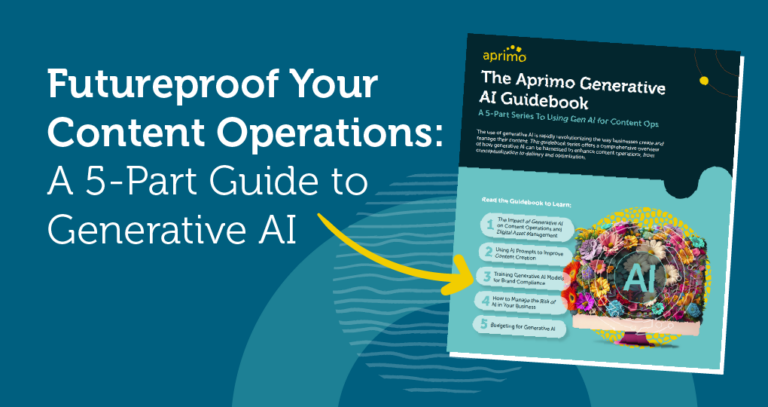DAM Collaboration: The Teamwork Hub for Creative Campaigns

From writers to graphic designers and website developers to project managers — creative teams thrive on collaboration. The tools marketing teams work with day in and day out have to promote positive collaborative experiences, or they’ll get in the way of efficient teamwork. One foundational piece of tech for creative campaign collaborations is a digital asset management (DAM) system. Using this software, teams can store and access all photos, videos, copy, and other pieces of a campaign, make edits, complete reviews and approvals, and ensure their delivery to the desired channel.

Overview of DAM Collaboration
Before diving into specific features of digital asset management software, you’ll need to understand DAM as a concept, the role of collaboration in creative projects, and how proper DAM can help support it.
What is DAM?
In general, digital asset management refers to the creation, collection, storage, editing, approval, sharing, and deletion of all digital assets involved in a company’s work. This includes:
-
Visuals like stock images, original photos, videos, and graphics
-
Audio components like podcasts, interviews, and meeting recordings
-
Digital files of print materials like sales collateral, brochures, and mailers
-
Documents and data, including internal process documentation, presentations, reports, and more
Why is collaboration important in creative campaigns?
Oftentimes, marketing teams are structured in subgroups depending on expertise. A creative team, depending on its size, might include one or a full group of the following:
-
Writers
-
Graphic designers
-
Web developers
-
Project managers
-
Marketing strategists
-
Videographers/photographers and editors
-
Proofreaders
Along with this structure comes the need for collaboration. Since many team members likely have a focused area of expertise, team members must work together to achieve the final wording, design, strategy, and execution of a campaign.
How does DAM support creative collaboration?
DAM works as a teamwork hub, gathering all assets in one, easy-to-access place. Within a digital asset management system:
-
Videographers and photographers can upload visuals for a campaign
-
Strategists can add data and research for writers to use, like keyword research
-
Writers can upload campaign-related copy
-
Designers can add visuals and graphics
-
Developers can access web copy or designs to add to a website
-
Project managers can access materials for a campaign to check their status
-
Proofreaders can check copy and final campaign materials for errors or inconsistencies
-
Leaders can access, review, and approve campaigns before they’re sent out
Benefits of DAM Collaboration
The benefits of using a DAM platform to foster creative collaboration include:
-
Streamlining communication among team members. Personnel from across the organization can access the assets they need, comment or make notes on them within the system, and even mark approval on final assets directly within the asset file.
-
Enhancing version control for creative assets. Like Google Docs or Microsoft Word, DAM software will keep a record of past versions of assets in case a reversion is needed. In many systems, all users have to do is upload a new version of the asset with the same name as the previous one.
-
Improving workflow efficiency in campaign development. In more advanced DAM systems, automated workflows allow teams to create task assignments, deadline reminders, and approval notifications that are sent directly to those who need to see them.


Key Features of a DAM Collaboration System
When looking for a DAM platform for enhanced collaborations, consider:
-
Accessibility and ease of use. Is the platform intuitive or will it require a steep learning curve for your team? Can the tool be easily implemented across the employees and departments that often collaborate?
-
Integration capabilities with other tools. How does the software fit into your current tech stack and processes? Will you have to overhaul everything in order to implement it, or can you preserve the pieces that are already working?
-
Security measures for protecting creative assets. Are access controls easy to set so only those people who need to view, edit, or share an asset can? Or is it easy for someone to mistake or misuse an asset within the system?
Best Practices for Implementing DAM Collaboration in Creative Workflows
When implementing a new DAM system or set of processes to promote better collaboration, training and onboarding are keys to success. User adoption plays a huge role in whether or not efficiencies will arise after the change — after all, what is a strategy or technology without execution?
Standardization will help when it comes to actually encouraging use of the new tool. Setting clear processes for asset management — and making sure all team members are well educated on them — will reduce frustration in the transition and make collaborations run smoother in the long term.
Once you have the system in place, focus on continuous improvement and optimization of collaboration workflows. Set regular intervals for reviews, feedback loops for those using the tools, and processes for changing procedures.


Measuring Success: Metrics for DAM Collaboration Impact
When it comes to measuring success, the first step is to set key performance indicators (KPIs) for assessing collaboration effectiveness. This might include how long it takes to execute on a creative idea before it can be approved and distributed. You can also measure the number of instances where assets were not handed off correctly to the next team member who needed to work on them in the past and compare that to the number of similar instances post-implementation.
The right tools for tracking and analyzing the impact of DAM on creative campaigns are also essential to ensuring long-term success. More robust DAM systems often include analytics directly in the software, creating a convenient way to demonstrate positive impacts to key stakeholders.
Frequently Asked Questions
How does DAM collaboration improve team communication?
DAM systems centralize communication channels, providing a unified platform for teams to collaborate, share feedback, and stay updated.
Can DAM Collaboration work for small creative teams?
Yes, DAM collaboration is scalable and can be customized to suit the needs of both large and small creative teams.
Is DAM Collaboration only for design assets, or can it handle other file types?
DAM collaboration platforms are versatile and can manage a variety of file types, including images, videos, documents, and more.
How secure are creative assets within a DAM Collaboration system?
DAM systems prioritize security with features like access controls, encryption, and secure authentication to protect creative assets.




